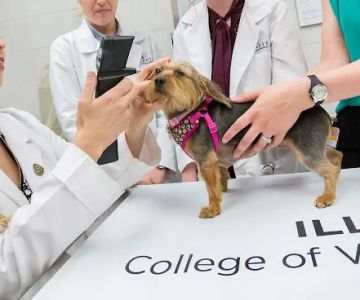How to Teach Your Dog to Leave Dangerous Items Alone – A Step-by-Step Guide
- Understanding the Importance of Training Your Dog to Avoid Dangerous Items
- Common Dangerous Items Dogs Should Avoid
- Mastering the "Leave It" Command
- Creating a Safe Environment for Your Dog
- Real-Life Case Study: Teaching My Dog to Avoid Dangerous Items
Understanding the Importance of Training Your Dog to Avoid Dangerous Items
As pet owners, one of our primary responsibilities is to ensure that our dogs are safe in their environment. Whether it's household items, toxic substances, or potentially harmful objects, teaching your dog to leave dangerous items alone can prevent accidents and keep them healthy. This type of training is not only beneficial for your pet’s safety but also for your peace of mind. Properly training your dog to avoid dangerous items is one of the most important skills that you can teach them, and it can save you from stressful and dangerous situations.
When you think about "dangerous items," you might imagine sharp objects or chemicals, but dogs can also get into trouble with seemingly harmless things, such as food scraps or electrical cords. By teaching them to avoid these items, you're ensuring that they understand which objects are off-limits, making your home a safer place for both you and your dog.

1008 W Hazelwood Dr, Urbana, IL 61802, USA
See DetailsCommon Dangerous Items Dogs Should Avoid
Dogs are naturally curious, and part of their exploration includes picking up and chewing on objects they find. However, this curiosity can sometimes lead them into dangerous situations. Here are some common items that can pose risks to your dog:
- Food Items: Chocolate, grapes, raisins, onions, and garlic are common human foods that can be toxic to dogs. Even foods like xylitol (found in sugar-free gum and candies) can be life-threatening.
- Cleaning Products: Many household cleaning products contain chemicals that are toxic to dogs, including bleach, ammonia, and detergents.
- Medications: Prescription and over-the-counter medications meant for humans can be extremely dangerous for dogs if ingested, including painkillers, antidepressants, and cold medications.
- Small Toys and Objects: Small objects, such as buttons, plastic caps, or even coins, can be choking hazards. Dogs often put things in their mouths, so keeping small objects out of reach is crucial.
- Electrical Cords: Dogs, especially puppies, may chew on electrical cords, which could lead to electrocution. Ensuring that cords are safely hidden or covered is essential for safety.
By recognizing the types of items that could harm your dog, you can better protect your pet and begin training them to leave these items alone.
Mastering the "Leave It" Command
One of the most effective ways to teach your dog to avoid dangerous items is through the "Leave It" command. This command is essential for preventing dogs from picking up or eating items that could harm them. Here’s how to teach your dog the "Leave It" command step by step:
- Step 1: Introduce the "Leave It" Command: Start by holding a treat in one hand and letting your dog sniff it. When your dog focuses on the treat, close your hand and say "leave it" in a calm but firm tone. Your dog will likely try to get the treat, but the key is not to reward them for any kind of pawing or snatching.
- Step 2: Reward Calm Behavior: Once your dog stops trying to get the treat and pulls back, immediately reward them with a different treat from your other hand. This reinforces the idea that good things happen when they leave the item alone.
- Step 3: Practice with More Challenging Items: Once your dog understands the basic concept, start practicing with more challenging items. Use a treat on the floor or other objects they might be inclined to investigate. Each time they listen to the "leave it" command, reward them with praise and a treat.
- Step 4: Gradually Increase the Difficulty: Continue practicing with different objects and environments. For example, take them outside and use objects they might find, like sticks or leaves. The goal is to teach your dog that the "leave it" command applies in every situation.
With patience and repetition, your dog will begin to associate the "leave it" command with the action of not touching or eating the item. This can be incredibly useful in real-life situations where dangerous objects are present.
Creating a Safe Environment for Your Dog
Training your dog to leave dangerous items alone is only part of the equation. It’s also important to create a safe environment where these items are less accessible. Here are some tips for ensuring that your home remains safe for your dog:
- Keep Dangerous Items Out of Reach: Store hazardous items like medications, cleaning products, and small objects in cabinets or shelves that your dog cannot access. Use childproof locks if necessary.
- Supervise Your Dog: Until your dog consistently follows the "leave it" command, it's important to supervise them closely, especially in unfamiliar environments or when they’re exploring new places.
- Provide Safe Alternatives: Offer plenty of safe chew toys and interactive items that can engage your dog and keep them from being tempted by dangerous objects. This will help redirect their attention to appropriate items.
By combining training with a well-organized, safe environment, you can significantly reduce the risks of your dog encountering harmful items.
Real-Life Case Study: Teaching My Dog to Avoid Dangerous Items
As a veterinarian, I’ve worked with many dogs to help them avoid dangerous items, but I also had to teach my own dog, Max, to stay away from certain things. Max, a curious Labrador, had a habit of chewing on anything he could get his paws on. One day, I caught him attempting to chew on an electrical cord—this was a wake-up call for me to start serious training.
Using the "leave it" command, I started with basic training, teaching Max to leave treats and toys alone when I commanded. At first, it was challenging, but with consistent practice and plenty of rewards, Max began to understand. Over time, I was able to use the same technique to teach him to avoid things like cords, food left unattended, and even dangerous garden plants in the yard. Max’s behavior improved, and he became much safer at home.
This experience reinforced how important it is to teach your dog to avoid dangerous items and how effective positive reinforcement can be. With patience and the right approach, any dog can learn to stay safe in their environment.
Conclusion
Teaching your dog to leave dangerous items alone is essential for their safety and your peace of mind. By using commands like "leave it," creating a safe environment, and providing plenty of safe alternatives, you can significantly reduce the risks your dog faces. If you're having trouble with training or want more advice, feel free to visit [Hidden Brook Veterinary] for personalized tips and professional guidance to ensure your pet's well-being.










